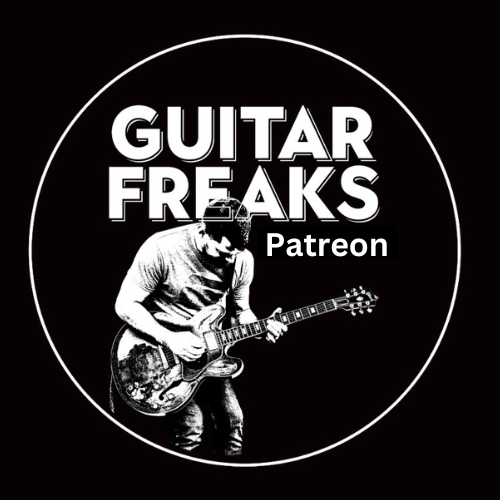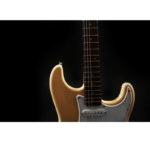Let’s cut to the truth:
If you’re only playing full minor chords and barre shapes, you’re missing one of the most powerful tools on the fretboard—minor chord triads.
These tiny three-note shapes unlock smooth rhythm parts, melodic solos, chord inversions, and harmonic sophistication that full chords just can’t touch.
In this post, you’ll learn:
- What minor chord triads are (and how they differ from full chords)
- How to play them in all inversions across the neck
- 7 game-changing ways to use them in your playing
- How to start mastering triads with the FretDeck™ system and our Guitar Freaks Hangout Discord

❌ Stop Guessing. Start Shredding.
If you’re still fumbling through scale patterns and box shapes… it’s costing you progress.
FretDeck™ is the no-fluff system that shows you exactly how to master the fretboard—fast. Early access.
⚡️ This isn’t for dabblers. It’s for players who want results.
👉 Click here to join the pre-launch now
Early access. Limited rewards. Don’t wait.
What Are Minor Guitar Triads?
A minor chord triad is the simplified form of a minor chord, made of only three notes:
- The root (e.g., A)
- The minor third (e.g., C)
- The perfect fifth (e.g., E)
That’s it.
No extra fingers. No buzzed barre chords. Just crystal-clear harmony in a shape you can move and manipulate all over the fretboard.
Why Triads Beat Full Chords
- Easier to play in lead and rhythm contexts
- Visually simpler on the fretboard
- More versatile for voice leading, soloing, and chord progressions
- Used by the pros to unlock melodic phrasing and clean tone
Triad Inversions: Your Secret to Movement
Every minor chord triad can be played in three distinct forms:
- Root Position: Root – Minor 3rd – 5th
- First Inversion: Minor 3rd – 5th – Root
- Second Inversion: 5th – Root – Minor 3rd
Each version gives you a different sound, feel, and position on the neck. Want your chord changes to feel like a piano player is voicing them? Learn your inversions.
7 Ways to Use Minor Guitar Triads in Your Playing
Ready to go beyond just knowing what they are?
Here’s how to use minor chord triads to transform your rhythm and lead playing:
1. Strip Your Rhythm Playing Down to Essentials
Drop the clutter. Instead of playing full minor chords, use triads for a cleaner, tighter sound. They’re perfect for funk, soul, R&B, and any groove-based style.
🎯 Example: Instead of Am – Dm – Em barre chords, use triads higher on the neck for a crisp and modern sound.
2. Build Solos Using Triads
Great soloists outline chord tones. Minor guitar triads help you land on the right notes over the right chords—without guessing.
🎸 Hit the minor 3rd and 5th of each chord in your solo to lock into the harmony and sound intentional.
3. Create Smooth Chord Progressions with Inversions
Jumping from root to root? That’s beginner stuff.
Use first and second inversion triads to move smoothly from one chord to the next, creating elegant, flowing transitions.
4. Add Open Strings for Atmospheric Sounds
Combine minor guitar triads with open strings to create dreamy or ambient textures.
🧠 Try this: A minor triad (A–C–E) + open G or B string = magic.
5. Split Melody and Bass with Triads
Fingerstyle players—use triads on the upper strings while your thumb walks a bassline below. This technique gives you depth and independence in your playing.
6. Harmonize Solos with Stacked Triads
Layer your lines! Minor guitar triads can be stacked to create harmonized leads in thirds or sixths. It’s the twin-guitar sound in one player.
7. Mix Minor and Major Triads for Emotional Contrast
Alternate between minor and major triads (like Am and C major) in your progressions for instant emotion and tension-and-release.
Famous Songs That Use Minor Guitar Triads
You’ve heard minor triads in action—even if you didn’t realize it.
🎶 “Stairway to Heaven” – Those iconic fingerpicked triads shape the intro’s moody atmosphere.
🎶 “Blackbird” by The Beatles – Paul McCartney’s fingerpicked triads make this acoustic ballad sing.
🎶 “House of the Rising Sun” – Minor triads broken into arpeggios define this folk-rock classic.
Want to Actually See Minor Guitar Triads on the Neck?
Then stop memorizing diagrams and start learning patterns.
✅ The FretDeck™: Pentatonic Scales Edition helps you master:
- Minor and major pentatonic shapes
- 60 scale positions (in every key)
- Minor triads within those scale patterns
It’s the ultimate visual practice tool—built for real fretboard freedom.
🎁 Bonus: Comes with the Pentatonic Secrets Course, where you’ll learn how to play triad-based solos, chord progressions, and lead lines in every key.
👉 Download FretDeck™ + Course Now
Learn the system. Play smarter. Solo better.

❌ Stop Guessing. Start Shredding.
If you’re still fumbling through scale patterns and box shapes… it’s costing you progress.
FretDeck™ is the no-fluff system that shows you exactly how to master the fretboard—fast. Early access.
⚡️ This isn’t for dabblers. It’s for players who want results.
👉 Click here to join the pre-launch now
Early access. Limited rewards. Don’t wait.
Practice Minor Guitar Triads With Other Players
🎸 Don’t learn in a vacuum.
Inside the Guitar Freaks Hangout Discord, we break down:
- Minor triad shapes by key
- Weekly triad challenges
- Exclusive exercises, feedback, and jam tracks
- A community of guitar freaks committed to mastering the fretboard
👉 Join the Discord Hangout Now

🎸 Join the Guitar Freaks Patreon!
Get SoloCraft E-Book FREE!
When you join Guitar Freaks on Patreon, you’ll instantly unlock my full e-book SoloCraft—your complete guide to fretboard mastery and building unforgettable solos. Think of it as your shortcut to playing with confidence and creativity.
👉 Don’t miss out—join now and grab your free copy!
Final Thoughts: Minor Guitar Triads = Maximum Fretboard Power
If you want to level up your playing—without learning 100 new shapes or scales—start with minor chord triads.
They’re:
- Easy to learn
- Practical for rhythm and lead
- Essential for soloing with purpose
- A pro-level secret hiding in plain sight
So here’s your next step:
🧠 Download the FretDeck
💬 Join the Discord
🎸 Practice triads. Master the fretboard. Play the music you hear in your head.
👉 Next up: Guitar Scales Fretboard Mastery – A Modern Guide to Unlocking the Neck
Discover how to break out of box shapes and visualize the fretboard with confidence using modern techniques and tools like FretDeck.










